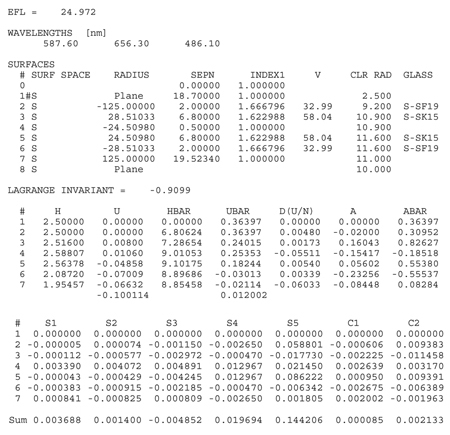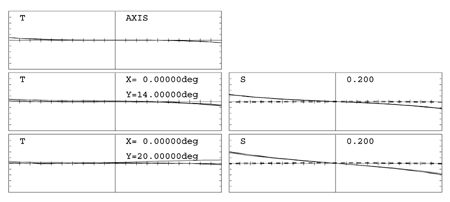In this eyepiece, both lenses are cemented doublets and are achromatic (Fig. 11.7). It is usually possible to make both lenses identical, without losing any performance. By careful choice of glass types, the nearly plane surfaces can be made planar and the other surfaces can all have the same curvature. Typical semi-field angles would be up to 20 deg, but the performance shown in Fig. 11.8 will be significantly better than the simpler eyepieces.

Figure 11.5 The Ploessl eyepiece.
The main uncorrected aberration is field curvature. In this example, the Petzval sum has been balanced by the introduction of astigmatism. Alternatively, eyepieces can be balanced for zero astigmatism with a curved field.
Citation:
View SPIE terms of use.
M. J. Kidger, Fundamental Optical Design, SPIE Press, Bellingham, WA (2001).
View SPIE terms of use.


